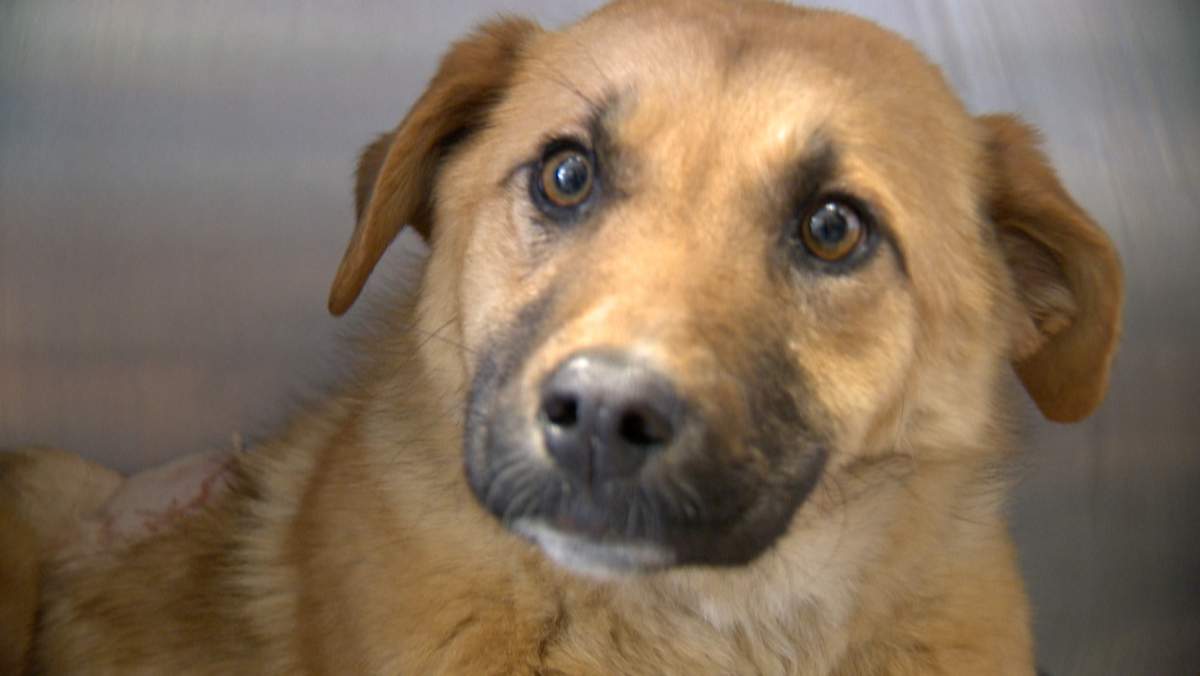
REGINA – At just nine months old, the Shepherd-cross pup was found shot with an arrow.
“She was shivering, she was afraid of us,” said Cady Shaw. “She was millimetres from being either paralyzed or killed.”
The story of Arrow, as she’s now affectionately named, garnered national attention last week. She’s now recovering even better than expected, according to Shaw.
“She’s super lucky; she didn’t have any major damage or even infection. We caught her just in time.”
Arrow might not be here without the work of CC RezQs, a non-profit that aims to rescue and rehabilitate dogs found in rural communities and on reservations.
The group launched in 2014 out of little more than a love for animals, but the joined a rescue group scene that was already getting busy.
One of the lead roles had been taken by Jamie Parker, who started Bright Eyes Dog Rescue in 2010.
“People are inspired to help, people want to help,” Parker said. “It’s a learning curve for everybody. Five years ago when we started, we had a whole lot to learn.”

Get daily National news
New regulations coming
Each has their own way of doing things. The number of animal rescues, shelters and fosters is rising in our province; the Saskatchewan SPCA has identified more than 50.
“What has happened recently is more and more people want to be helping animals, so they’ve established their own rescue groups,” said Frances Wach, the SSPCA executive director.
“They want to help animals, but don’t have a good idea of what all the requirements are.”
It’s one reason why it may be time to regulate them. A plan is in the works to establish guidelines, a code of ethics and certification – like a seal of approval for rescues to show they pass the test.
“They need to understand what they’re getting into,” Wach said. “A lot of times, people might start for the right reasons. They want to help animals, but don’t have a good idea of what all the requirements are.”
Costly operations
Regina Cat Rescue is one of the groups that’ll have a say in this process. One point Sabrina Cataldo makes is that the operation isn’t cheap, so any new cost of certification should be kept to a minimum.
“If there was a small rescue that couldn’t afford it and all the other rescues could, it’s going to look bad for them,” she said. “It’s going to look like they’re not following the rules, when in fact, they could be.”
Parker echoes that point too, citing veterinary bills of “$8,000 a month, easily.”
“That’s a lot of fundraising, that’s a lot of steak nights.”
There may be many of these groups, but it’s evident they don’t see it as a competition. Even when they rely almost exclusively on fundraising dollars, the advent of online campaigns has allowed them to reach a broader audience.
“If we have an injured cat and there’s a really large vet bill, we can focus the fundraising efforts on that cat and let people know about it,” Cataldo said.
Pets get ‘brand new life’
Keeping these animal rescue groups going means hours of hard work from volunteers – well worth it, they say.
“To see a dog go from a completely shut down, nervous wreck to running around the park with other dogs and running up to their owner and giving them kisses, it’s just such a huge difference to see that light come into their eyes,” Parker said.
In the case of Arrow and so many others, it’s about giving pets a second chance.
“Seeing how well and happy she is, she’s such a good dog,” Shaw said. “She has a brand new life now.”
“They would have either starved or been killed … that animal wouldn’t be here if it wasn’t for you.”




Comments